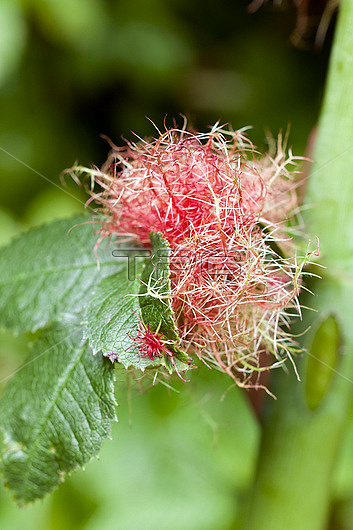
Developing bedeguar galls on the leaf of a dog rose, Rosa canina. The picture shows two galls at an early stage of growth. The larger - 1cm in size and behind the leaflet - appears as a mass of filamentous outgrowths, both red and white in colour. The smaller, below to left, is on the upper leaf surface. The galls arise after a female gall wasp, Diplolepis rosae, lays eggs within the leaf tissue. The gall develops into a woody structure around a chamber containing the wasp larva. Large galls may contain several chambers. Most D. rosae females do not require a male in order to reproduce. Instead they lay diploid eggs, a lifestyle called thelytoky. This reproductive behaviour results from infection by Wolbachia bacteria. Wolbachia infects many insect species. It can suppress the replication of viral pathogens some carry, and has been used as an agent to control mosquito borne Dengue virus
| px | px | dpi | = | cm | x | cm | = | MB |
Details
Creative#:
TOP25967550
Source:
達志影像
Authorization Type:
RM
Release Information:
須由TPG 完整授權
Model Release:
N/A
Property Release:
N/A
Right to Privacy:
No
Same folder images:

 Loading
Loading